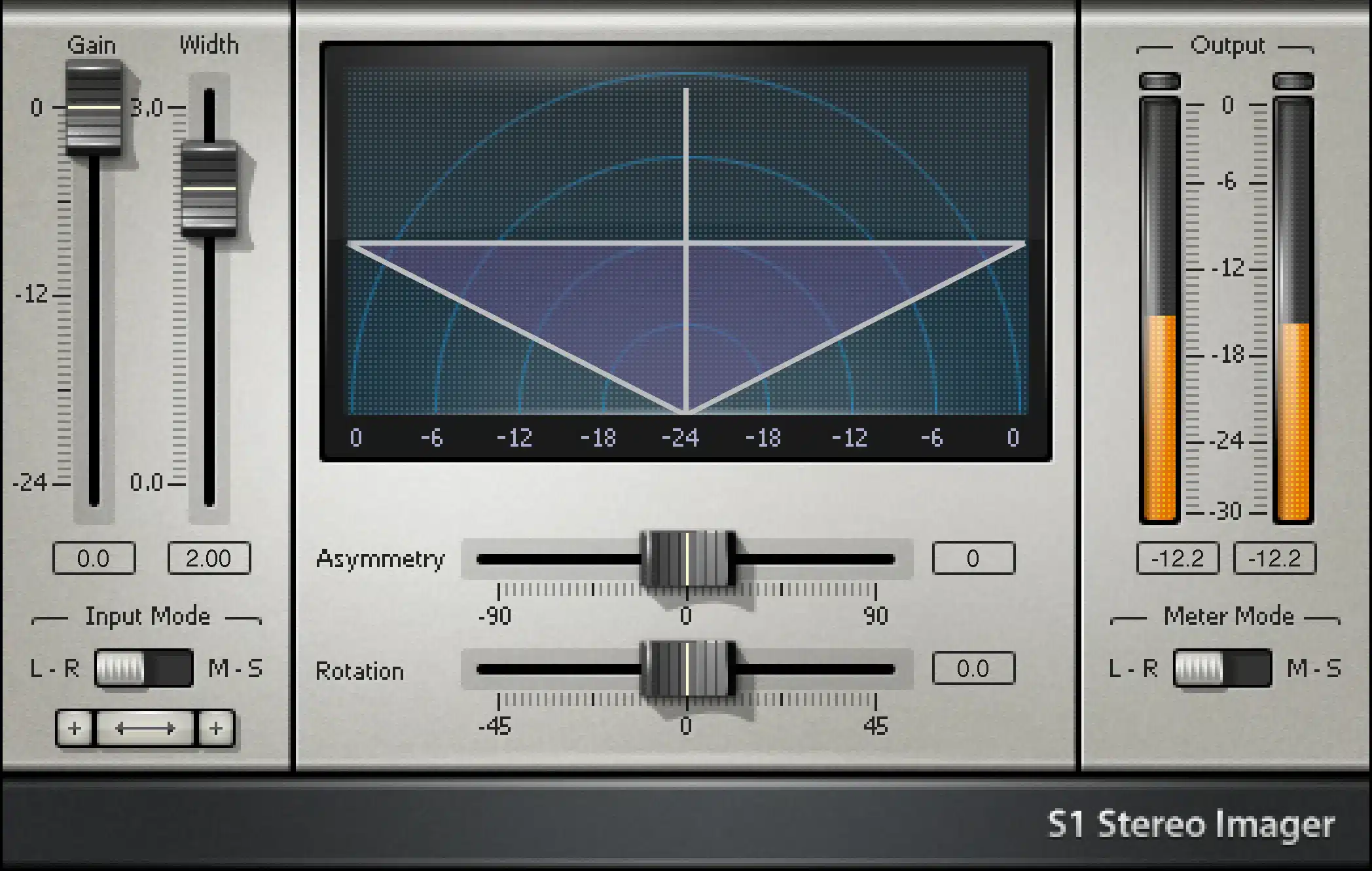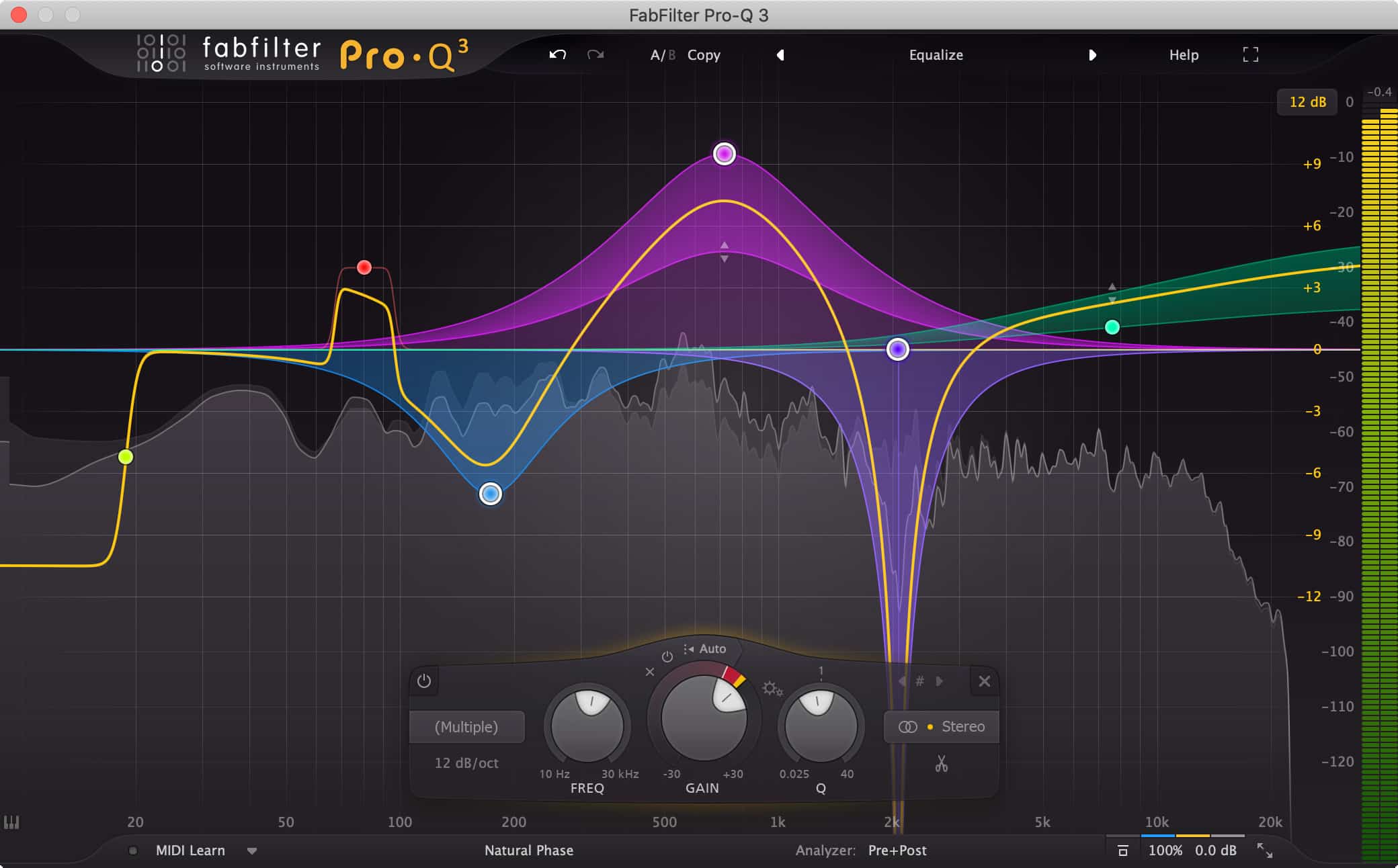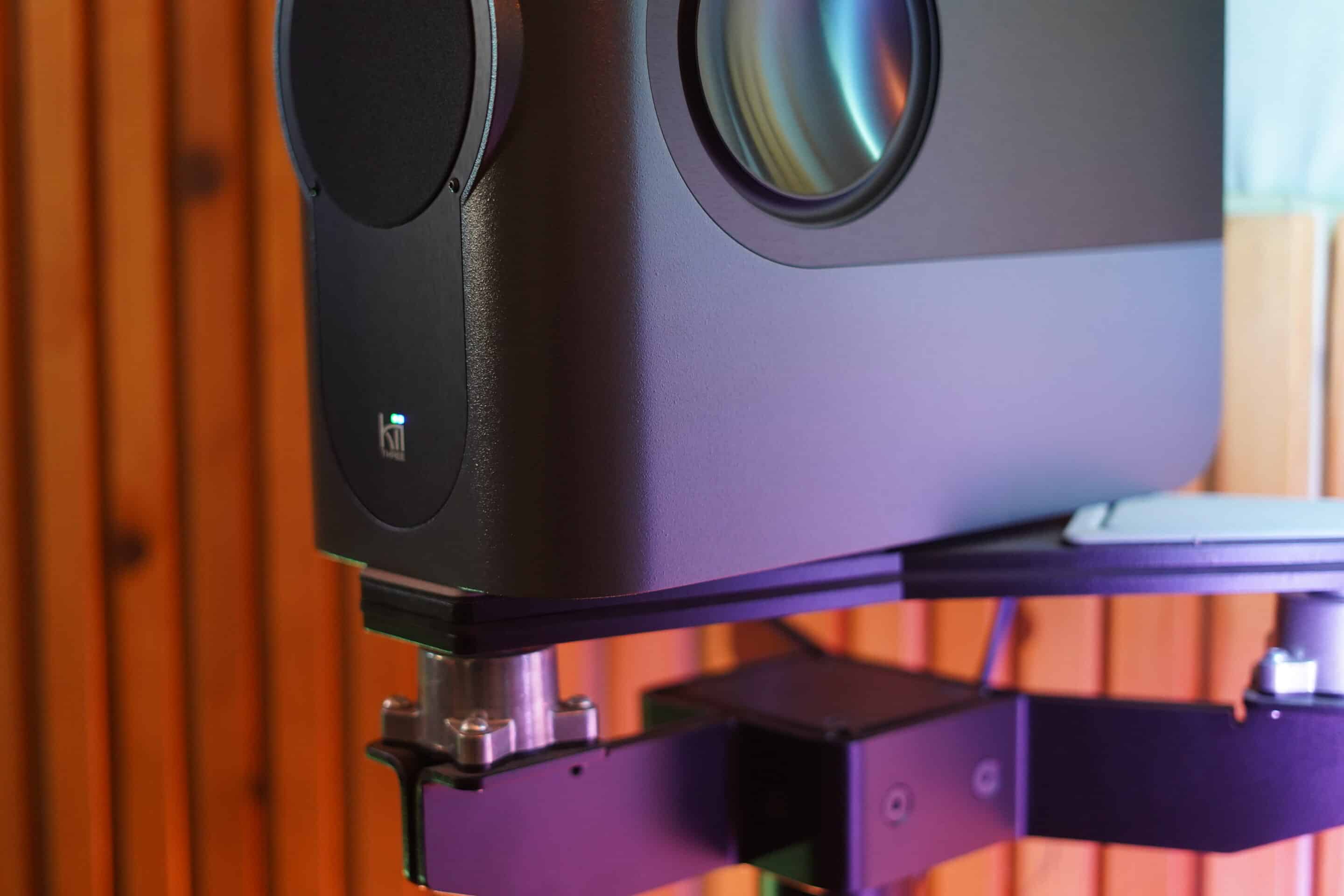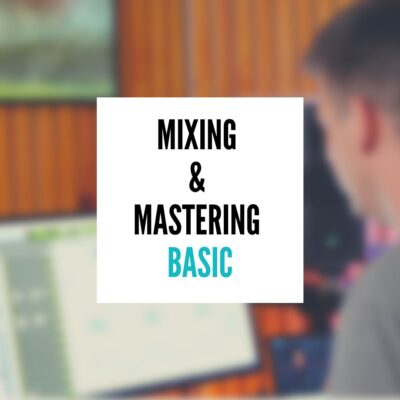As a professional mixing and mastering engineer, I’ve spent countless hours tweaking knobs and sliders to find the perfect reverb settings for drums. It’s a nuanced art, balancing the natural sound of the drum kit with the artificial ambiance created by reverb. In this comprehensive guide, I’ll share my insights and techniques to help you master the art of applying reverb to drums, ensuring your mixes sound dynamic, lively, and professional.
Understanding Reverb and Its Impact on Drums
What is Reverb?
![]()
Reverb is essentially the sound that remains in a space after the original sound has stopped. In a recording or mixing context, it’s used to simulate the acoustic properties of different environments. When applied to drums, reverb can transform a flat, uninspiring sound into a lively, resonant one. It’s not just about adding echo; it’s about giving life and context to the drums, making them feel like they’re part of a real, tangible space.
Types of Reverb Suitable for Drums
- Plate Reverb: This type of reverb uses a large metal plate to create a rich, resonant echo. It’s particularly effective for snares and hi-hats, adding a bright, shimmering quality that can make these elements stand out in a mix.
- Room Reverb: Mimicking the sound of a drum kit in a physical room, this reverb is great for adding a sense of space without overwhelming the original sound. It’s versatile and can be adjusted to simulate everything from a small, tight room to a larger, more open space.
- Hall Reverb: If you’re looking for a more dramatic, expansive sound, hall reverb is the way to go. It’s ideal for creating a sense of grandeur and depth, often used in genres like rock or orchestral music where a larger-than-life drum sound is desired.
- Chamber Reverb: Known for its warm, smooth decay, chamber reverb is excellent for achieving a vintage or retro drum sound. It’s less about sharp reflections and more about a lush, enveloping echo.
- Digital vs. Analog Reverb: Digital reverbs offer precision and a vast range of adjustable parameters, while analog reverbs provide a characteristic warmth and often a more natural decay. The choice between digital and analog will depend on the specific needs of the track and personal preference.
Key Factors in Choosing Reverb Settings for Drums
The Role of Drum Type and Style
Each drum in your kit and the style of music you’re working with will dictate different reverb approaches:
- Snare Drums: The snare often requires a reverb that enhances its crack and body without blurring the transients. A bright reverb with a moderate decay time can make the snare pop in the mix.
- Kick Drums: The kick drum is the heartbeat of most tracks, and clarity here is key. A light touch with reverb, focusing on the higher frequencies, can add depth without muddiness.
- Toms: Toms can benefit from a medium decay reverb that emphasizes their natural tone and resonance, adding a sense of movement and drama to drum fills.
- Cymbals: These are often treated with a longer, more diffuse reverb to add shimmer and sustain, helping them to float above the mix.
Understanding Reverb Parameters
- Decay Time: This is perhaps the most critical parameter. It determines how long the reverb lasts after the initial drum hit. For faster, more rhythmic music, shorter decay times can keep the mix tight and focused. In contrast, ballads or more atmospheric tracks might benefit from longer decay times for a more expansive sound.
- Pre-Delay: This parameter sets the time between the original sound and the onset of the reverb. A longer pre-delay can help the drums stand out more in the mix by creating a small gap between the drum hit and the reverberation.
- Wet/Dry Mix: This controls the balance between the unaffected ‘dry’ signal and the ‘wet’ reverberated sound. A mix that leans towards dry is usually preferable for drums to maintain their punch and clarity.
- Room Size: This affects the character of the reverb. Smaller room sizes can give a more intimate, controlled sound, while larger rooms can create a sense of space and depth.
- Early Reflections: These are the first echoes that reach the listener’s ears and are crucial in defining the perceived size and character of the space. Adjusting the level and timing of early reflections can dramatically change the feel of the reverb.
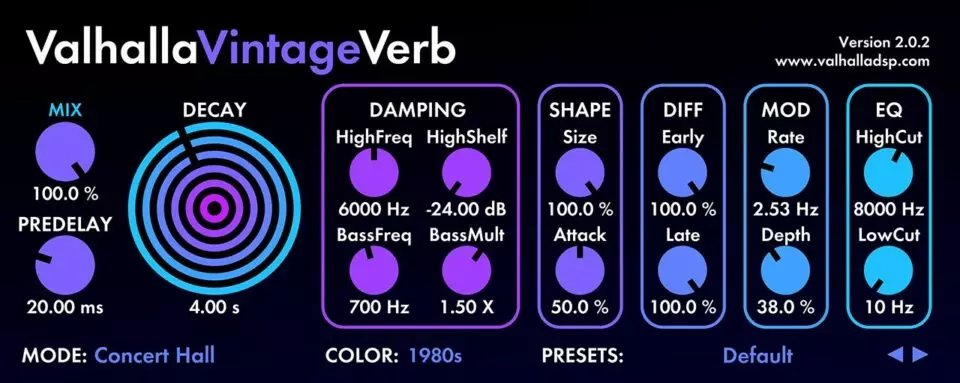
One of My Favorite Reverbs
Best Practices for Reverb Application on Drums
Setting Up Reverb for a Natural Drum Sound
Achieving a natural drum sound with reverb requires a balanced approach:
- Start with Subtlety: Begin with a light application of reverb and gradually increase it until you achieve the desired effect. It’s easier to add more reverb than to take it away once it’s been applied too heavily.
- Match the Room to the Kit: Consider the natural sound of your drum kit. A bright-sounding kit might benefit from a darker, warmer reverb, while a more muted kit could be livened up with a brighter reverb.
- Use Pre-Delay Wisely: Adjusting the pre-delay can help the initial drum hit cut through the mix before the reverb tail begins, maintaining clarity and impact.
Creative Reverb Techniques for Drums
- Gated Reverb: This technique, popularized in the 80s, involves applying a gate to the reverb tail, cutting it off abruptly. This can create a punchy, controlled reverb effect that’s particularly effective on snares.
- Using EQ with Reverb: Applying EQ to the reverb (either by using a reverb with built-in EQ or by placing an EQ after the reverb in the signal chain) can help shape the tone of the reverb. Cutting low frequencies can prevent muddiness, especially on kick drums.
- Compression Techniques: Applying compression to the reverb can add density and sustain to the drum sound, making the reverb feel more integrated with the drum hits.
- Layering Multiple Reverbs: Using different types of reverb on different elements of the drum kit, or even on the same element, can create a complex and unique sound. For example, a short room reverb on the snare combined with a longer hall reverb on the toms can add depth and variety to the overall drum sound.
Advanced Reverb Techniques for Specific Drum Elements
Reverb Settings for Snare Drums
- Brightness and Clarity: A brighter reverb with a moderate decay can enhance the snare’s snap and body. This can be achieved by using a plate or room reverb with adjusted high frequencies.
- Avoid Overpowering: It’s easy to overdo reverb on the snare, which can lead to a washy, indistinct sound. Keep the reverb level in check and focus on enhancing the snare’s natural character.
Kick Drum Reverb: Do’s and Don’ts
- Subtlety is Key: The kick drum often works best with minimal reverb. If reverb is necessary, focus on the higher frequencies to add depth without muddiness.
- Focus on the Low End: If using reverb on the kick, ensure it doesn’t interfere with the low frequencies. A high-pass filter on the reverb can help maintain clarity in the low end.
Toms and Cymbals: Finding the Right Space
- Toms: A medium decay reverb can bring out the natural resonance of toms, adding a sense of movement and drama to drum fills. Consider using a room or chamber reverb with adjusted mid frequencies to enhance their natural tone.
- Cymbals: These often benefit from a longer, more diffuse reverb to add shimmer and sustain. A hall or plate reverb with a longer decay time and a high-pass filter can help the cymbals float above the mix without becoming overwhelming.
Mixing Drums with Reverb in Context
Balancing Drums and Reverb in the Full Mix
- Context Matters: It’s crucial to adjust reverb settings while listening to the drums in the context of the full mix. This ensures that the reverb complements the other elements and contributes to the overall balance of the track.
- Maintain Balance: The reverb should enhance the drums without overpowering them or other elements in the mix. Continuously adjust the reverb settings as you mix to ensure they work well with the evolving track.
Common Mistakes When Applying Reverb to Drums
- Overuse of Reverb: Applying too much reverb can make the drums sound distant and disconnected from the rest of the mix. It’s important to use reverb judiciously and always in service of the song.
- Mismatched Reverb Types: Choosing a reverb that doesn’t fit the style or tempo of the music can result in a disjointed sound. For example, a large hall reverb might not be appropriate for a fast-paced punk track.
- Phase Issues: When using multiple reverbs, especially on different elements of the drum kit, phase issues can arise. Always check for phase alignment and adjust the reverb settings or routing to avoid any detrimental phase cancellation.
Case Studies and Examples
Analyzing Professional Mixes
- Case Study 1: “When the Levee Breaks” by Led Zeppelin features a legendary drum sound achieved through careful placement of microphones and natural reverb. Analyzing this track can provide insights into how natural reverb and room characteristics can be used to create a powerful drum sound.
- Case Study 2: “In the Air Tonight” by Phil Collins is famous for its use of gated reverb on the snare drum. This track is a perfect example of how creative reverb techniques can define the sound of a song and influence an entire era of music production.
In conclusion, finding the best reverb settings for drums is a blend of technical knowledge, creative experimentation, and continuous adjustment based on the context of the mix. Remember, the goal is to enhance the natural sound of the drums, not to overshadow it. Trust your ears, and don’t be afraid to break the rules once you understand them. The right reverb can elevate a drum track from ordinary to extraordinary, bringing depth, character, and life to your music.
Conclusion: Mastering Reverb for Dynamic Drum Mixes
In the world of music production, the application of reverb to drums is both an art and a science. It’s about understanding the subtleties of each drum element, the genre of music, and the overall context of the mix. As we’ve explored various techniques and considerations for applying reverb to drums, it’s clear that there’s no one-size-fits-all approach. Each mix presents its unique challenges and opportunities for creative expression.Trust your ears, experiment, and don’t be afraid to break the rules once you understand them. The right reverb can bring depth, character, and life to your drums, making your music resonate with listeners.


